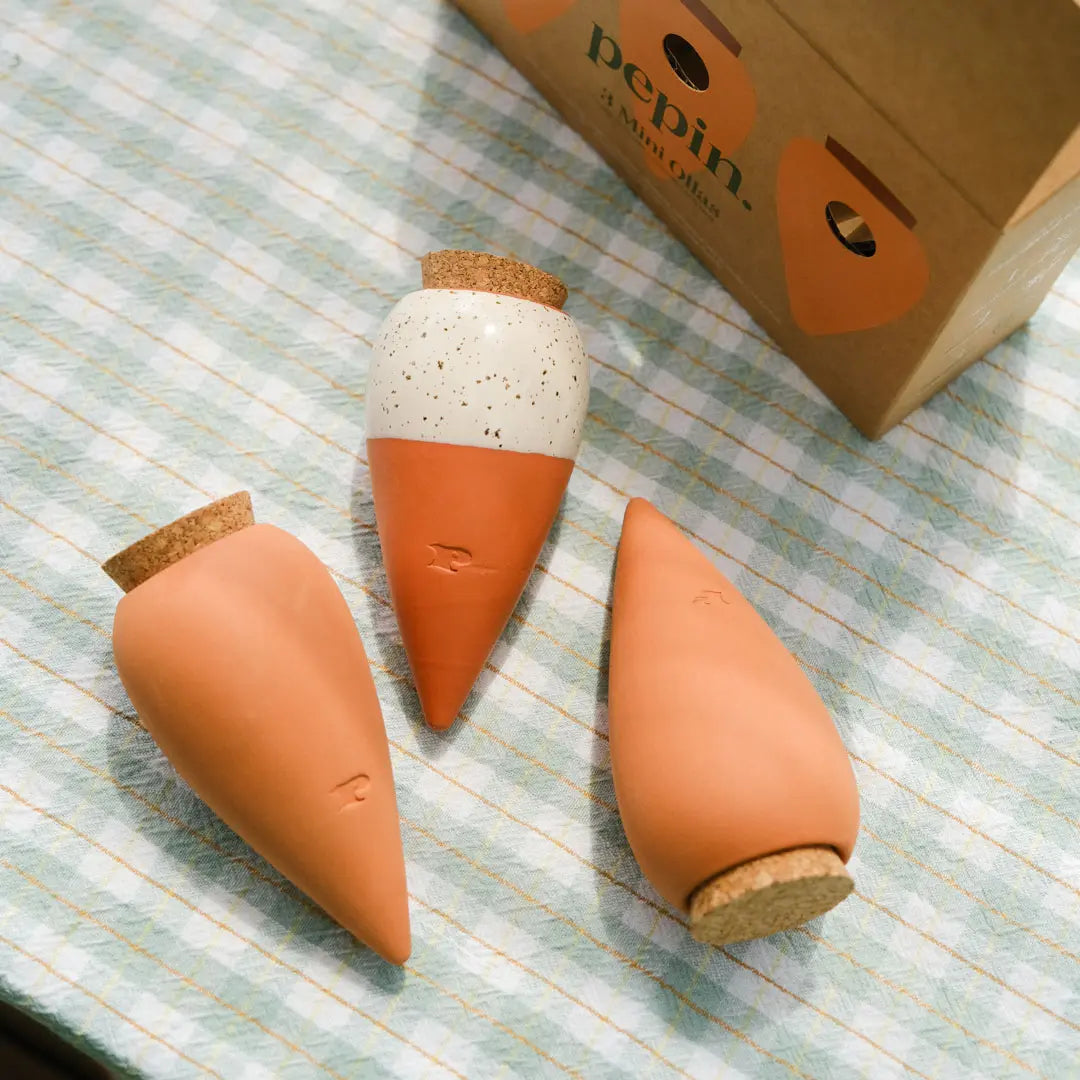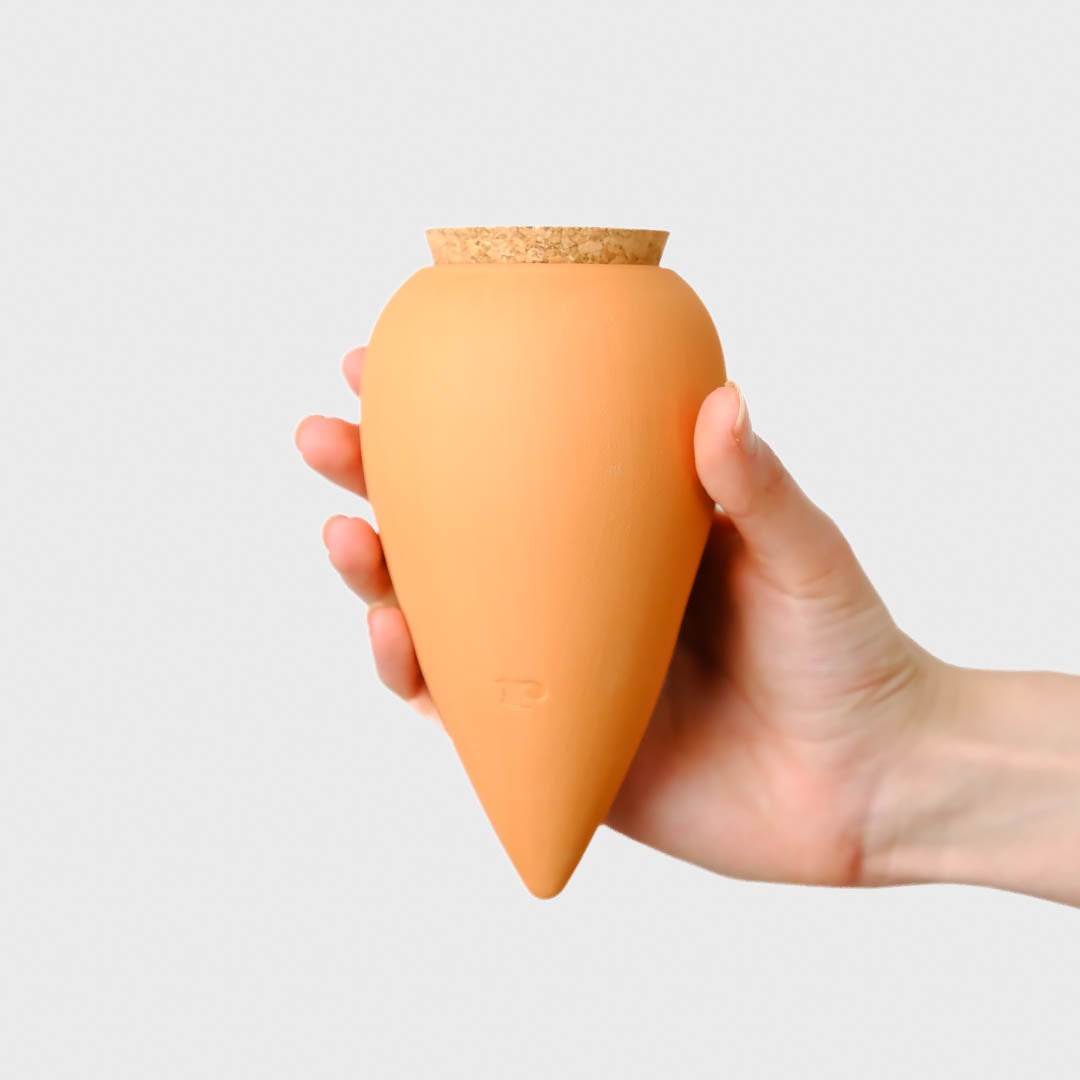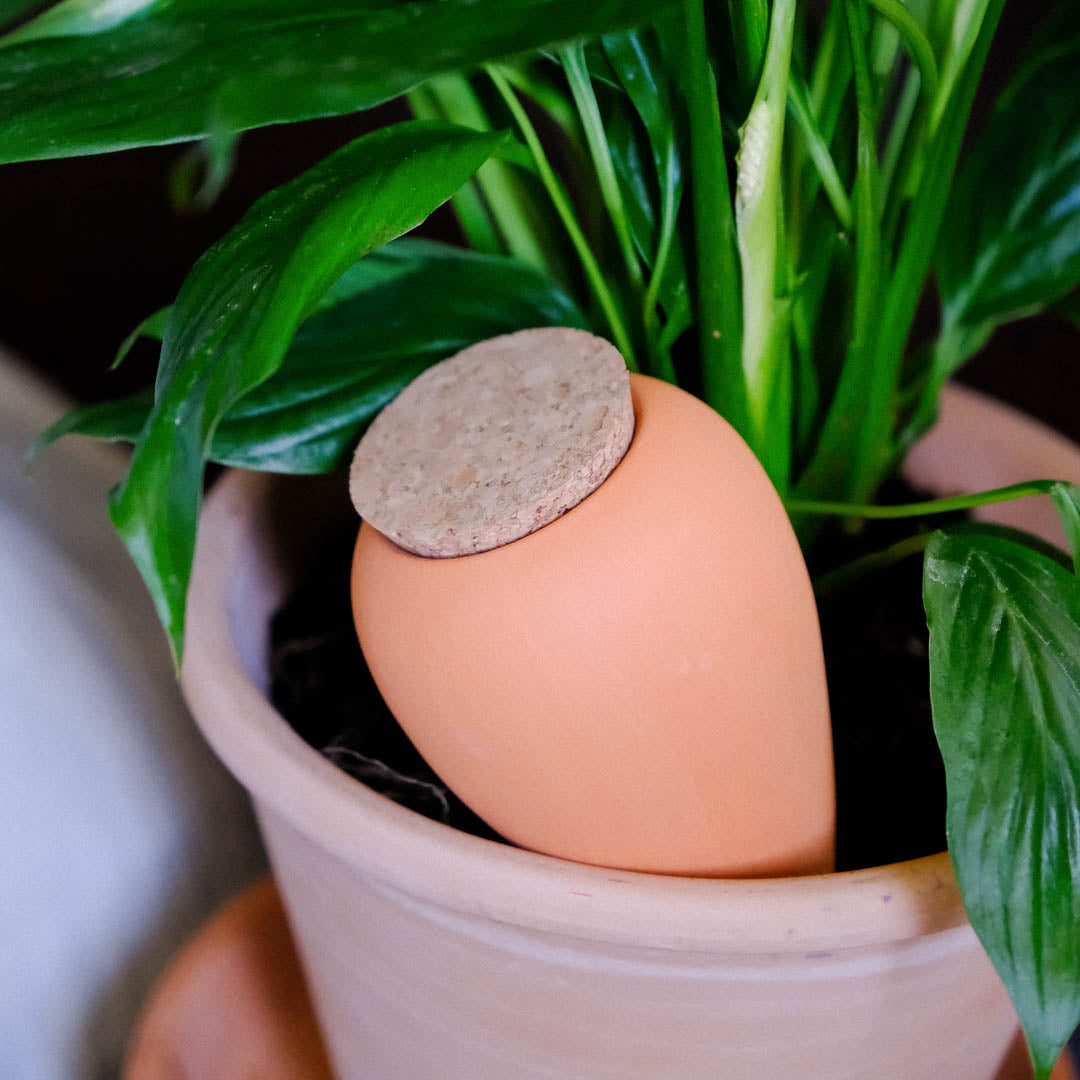The answer is simple: all plants! Whether it's ornamental flowers in balcony planters, indoor plants that spruce up your work-from-home space, or succulents, ollas will fit the bill. However, their use can be optimized to obtain the best possible results.
indoor plants
For the most common indoor plants such as Monsteras, Pachiras or Pileas: No problem, these plants have classic water needs. The main risk is to drown the roots and lead to rotting which would be fatal to them, by watering them too much at one time. The water contained in our ollas to be planted diffuses on average in 5 days in the soil of your plant, you will avoid over watering. For optimal development of the plant, do not hesitate to clean the leaves with a damp cloth to remove ambient dust deposits and maximize photosynthesis. At the same time, you can water the surface with a little natural fertilizer for indoor plants .
Cacti and succulents
Plants reputed to be easy to care for, they are often a gateway to the world of indoor plants, especially for those who are convinced that they do not have a green thumb. But beware, these plants nevertheless have specific needs! In their natural habitats, they live in very specific climatic conditions.
Their watering should not be neglected, because they need to make reserves at certain times to develop well. Even more than for other plants, too much watering in a substrate that is not draining enough will disrupt the storage of water and could cause serious damage. The oyas to be planted are therefore ideal in order to regulate this process gently.
In winter, filling the olla each month will be more than enough, and will allow the substrate to dry out well. For the rest of the year, once every 15 days (or once a week in the event of extreme heat), will be necessary, provided once again that the substrate is very dry.
Can I use fertilizer in my ollas?
We advise you not to. In theory, if the fertilizer you're using is completely water soluble (it dissolves entirely in water), it might work. But the tight pores of terracotta act as a filter for larger particles and could clog. And really, how often do you need to fertilize? Make it your exception for surface watering.
